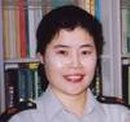|
Plenary
Lecture
Strategies for Nerve Regeneration after CNS Injury

Professor Xiaodan Jiang
Co-authors: Shanshan Song, Zhicheng Xiao, Ruxiang Xu
Neurosurgery Institute of Guangdong
Zhujiang Hospital of Southern Medical University
258# Gongye Road, Guangzhou510282, Guangdong Province
P. R. of China
E-mail:
jiangxiao_dan@163.com
Abstract:
It was traditionaly thought that the central nerve
system (CNS) defected the regenerated ability, following
the injury. However,the eripheral nerve system (PNS)
possesses an ability of regeneration after injury.Also
it was found that the axon in CNS might extended into
the graft, as soon as the peripheral nerve tissue was
transplanted into the injured part of CNS. Therefore, it
implied that the axon in CNS also possess the
regeneration ability, and the regeneration of axon in
CNS just depended on the microenvironment around
them.The microenvironment of CNS doesn't adapt to the
nerve regeneration after damage. The different
microenvironment between CNS and PNS mainly results from
the different types of glial cells--the oligodendrocytes
in CNS play an inhibit role, while the Schwann cells in
PNS play an active role in the repairing process
following the nerve injury. When CNS damaged, the
injured myelin sheath that composed from
oligodendrocytes released a lot of inhibitors for axon-regeneration.
On the other hand, glial scar inhibited the axon
regeneration by space obstruction proteoglycan
inhibition (e.g.chondroitin sulfate proteoglycans,
CSPGs).Therefore, the repair strategies for nerve
regeneration of CNS were just as Seeds Substitution and
Soil Amendment, follwing injury. For example, Soil
Improvement was performed by weaking the inhibitors of
obstructing the CNS regeneration, removing the glial
scar, suppling the advantageous factors, transplanting
the endothelial progenitor cells (EPCs) in order to re-establish
the microvascular, and repairing the injured myelin.
Seed Substitution was done by transplanting the nerve
stem cells (NSCs), and appling the biomacromolecules as
the cellular bridges during the CNS regeneration.
Finally, the injured CNS can be repaired.
Brief Biography of the Speaker:
Xiaodan JIANG is a Professor of Neurosurgery Institute
of Guangdong Province, at Zhujiang Hospital of Southern
Medical University, China. She graduated in Harbin
Medical University of China in 1983 for Bachelor of
Medical Science, and in 1989 for Master of Medicine.
During 5 of years from 1992 to 1997, she got the
Scholarship from Culture and Education Minister of Japan
Government, graduated and got Medicine PhD degree at
Kochi Medical University, Japan in 1997. Returning to
China, she has been working at Neurosurgery Institute of
Guangdong Province, Southern Medical University, as a
Professor, where she has also the scientific
responsibility for Nerve Regeneration Group. Her main
research interests are focus on the Mechanisms of Injury
and Repair of the Central Nerve System (CNS), Molecular
Mechanisms of Regulation and Control of Neural Stem
Cells (NSCs) Differentiation, and Clinical Therapy
Application by NSCs Transplant. In these fields, she
authored or co-authored over 20 scientific papers
published in international journals recent 2 years, in
which the highest impact factor (IF) is 18.7 (Nature
Cell Biology, 2008). She edited or participated to edit
8 of Academic Monographs mainly including Neural Stem
Cells (ISBN 7-80121-857-4/r.850, Beijing 2006),
Empirical Method of Modern Midicine (ISBN
7-117-02631-6/R.2632, Beijing 2009), etc. Also she got 2
of National Invention Patents of China, including
Preparative Method of NSCs Medium (ZL02134314.4) and
Culture Method of Human NSCs (ZL02134313.6). She has
gotten 13600 thousands RMB of Science Funds from China
Government since 2000. She also has the Scientific
memberships such as IEEE, Electron Microscopy
Organization (Japan, China), Anatomy Organization
(Japan, China), Neuroscience Association of China,
Cytochemistry and Histochemistry Organization (Japan),
and Human Biological Tissue Engineering Academic
Organization of Guangdong Province. She also is a Review
Specialist for Nature Science Fund and Nature Science
Technique Award of China. Her PhD students are working
in different universities or research institutions in
China, USA, and Singapore now.
|
